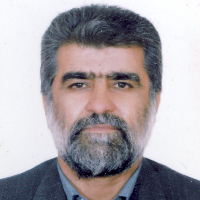The Iranian religious beliefs impact on Mongol masters inclination toward developing religious endowments (since Ogtay Khan (626 AH) to Qazaan Khan (694 AH))
Author(s):
Article Type:
Research/Original Article (بدون رتبه معتبر)
Abstract:
Waqf is one of the cultural and social traditions of the Iranian era, which has been influenced by numerous factors throughout history. The present research sought to find the answer to the question of what is the relation between the development of the waqf tradition and religious beliefs of the people of that time. Research method is based on documentary information collection. The results showed that at the beginning of the Mongol`s invasion they constructed temples or churchs, but gradually they influenced by the beliefs of the Iranian Shiites and attempted to expand religious endowments. In addition, the two Islamic characters in their court, called Khajeen Siir-al-Din Tusi and Shamsuddin-i-Joveini, played a major role in the development and rehabilitation of the waqf tradition despite the contradiction of their beliefs with the rulers.
Language:
Persian
Published:
Tarikh, Volume:14 Issue: 52, 2019
Pages:
122 to 150
magiran.com/p2014853
دانلود و مطالعه متن این مقاله با یکی از روشهای زیر امکان پذیر است:
اشتراک شخصی
با عضویت و پرداخت آنلاین حق اشتراک یکساله به مبلغ 1,390,000ريال میتوانید 70 عنوان مطلب دانلود کنید!
اشتراک سازمانی
به کتابخانه دانشگاه یا محل کار خود پیشنهاد کنید تا اشتراک سازمانی این پایگاه را برای دسترسی نامحدود همه کاربران به متن مطالب تهیه نمایند!
توجه!
- حق عضویت دریافتی صرف حمایت از نشریات عضو و نگهداری، تکمیل و توسعه مگیران میشود.
- پرداخت حق اشتراک و دانلود مقالات اجازه بازنشر آن در سایر رسانههای چاپی و دیجیتال را به کاربر نمیدهد.
In order to view content subscription is required
Personal subscription
Subscribe magiran.com for 70 € euros via PayPal and download 70 articles during a year.
Organization subscription
Please contact us to subscribe your university or library for unlimited access!


